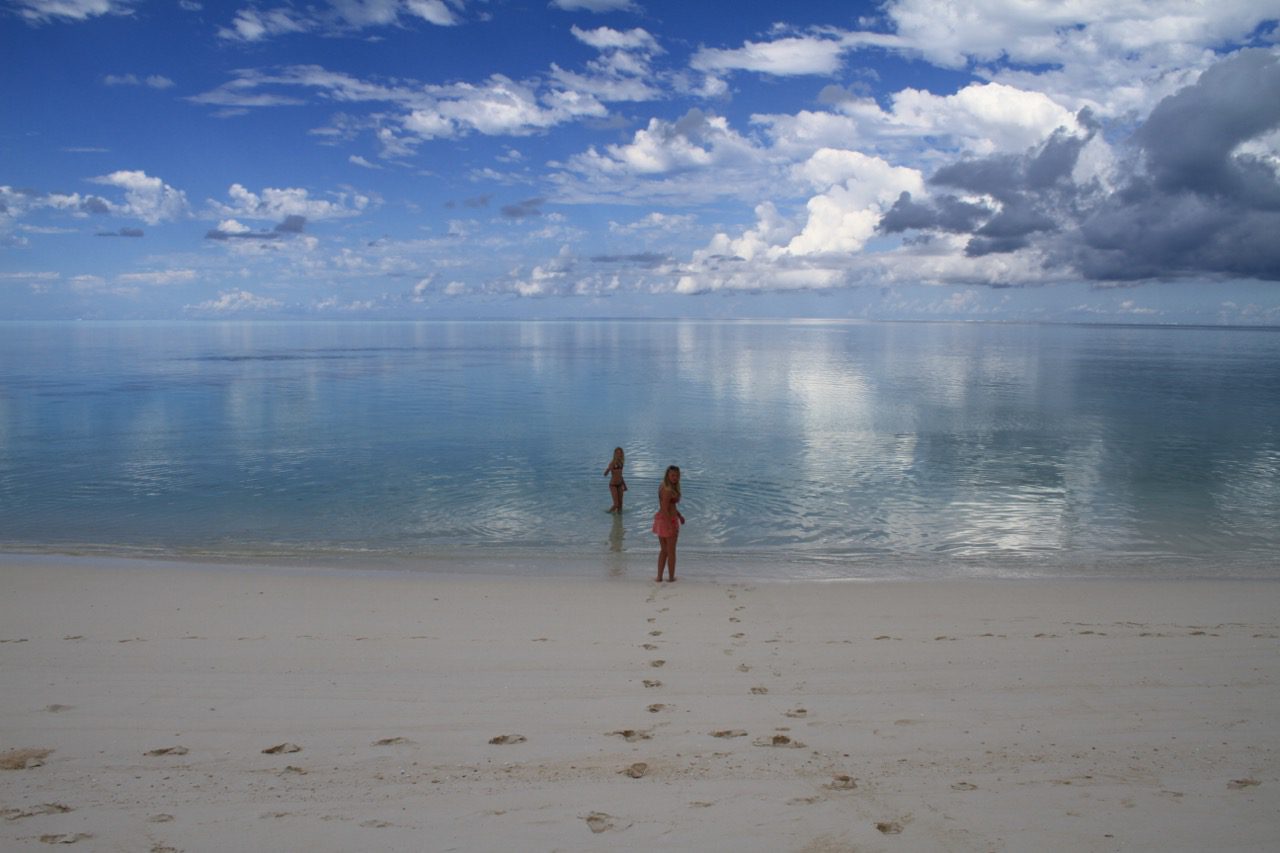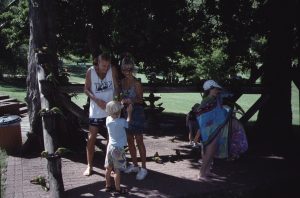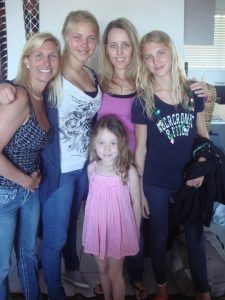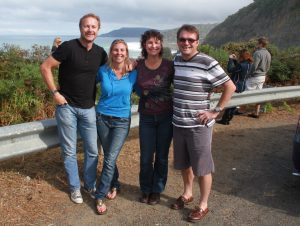🙂 A wildlife haven! Girls qualified as PADI Openwater Divers.
🙁 Missed Trent’s 21st
Just WOW. What an awesome place. No wonder the BBC base themselves here to film Blue Planet Live from. It is a true wildlife haven. I had one snobbish person ask me why on earth I selected this island over all the others… clearly wildlife does not resonate in that realm. Shame. We stayed at the only place to stay, as it is a small island – Heron Island Resort. We enjoyed 5 blissful days here and the girls left as qualified Openwater PADI Divers.
Heron Island reef is home to the Great Barrier Reef’s living icons, The Great Eight. These creatures are top of everyone’s wish list to see and include; Clownfish, Giant Clams, Manta Rays, Maori Wrasse, potato cod, sharks, turtles and whales.
We had the privilege of flying in by helicopter from Gladstone, which in itself was amazing as we saw turtles from the air. HERON ISLAND was discovered in 1843 by European surveyors aboard HMS Fly. The ship’s resident geologist named the island after the plentiful herons he saw on its shores. Those herons were later declared by scientists to be eastern reef egrets, but the name stuck. There was little development on Heron until the 1920s, when a turtle soup cannery was established, but it was short-lived. During the 1930s, Captain Christian Poulsen started ferrying tourists there and in 1936 he opened the Heron Island Resort. In 1943, the island was gazetted a national park, and today the eastern half of the island remains protected as part of the Capricornia Cays National Park. Heron’s remoteness keeps daytrippers away; it is only the resort’s guests (no more than 200) and staff, as well as a small contingent of researchers, who share the island. And, of course, the birds. In a bumper summer season, the oasis attracts some 200,000 seabirds. In his almost eight years working on the island, Jason estimates he’s seen about 120 different species, but there are about 25 he commonly spots.















The first evening after dinner we did a walk to Shark Point – well, we certainly know why the name fits! Immediately after the shallow a small gulley drops into deeper water and we must have seen 20 medium to large grey nurse sharks writhing in the shallows! Caitlyn asked whether she would be diving with them and I reassured her that they would head out into the open ocean in the morning. Well, the poor child had horrendous nightmares all night long!
We enjoyed a lovely breakfast and the girls headed off on the Scuba Training while Paul and i relaxed on the white sanded beach.We enjoyed the prolific birdlife in the mangrove just metres from us.









The white capped Noddies are especially interesting. It’s impossible to escape the cacophony of the 70,000–120,000 black noddy terns that nest each spring in the pisonia trees. The smell of guano hangs heavy in the air, alleviated only by the sea breeze, but you quickly get used to the pong. The forest and the Noddies have a symbiotic relationship: the birds create a very weak and loose stick nest which they make predominantly out of the Pisonia leaves which they collect from the forest floor and stick it together with bird droppings (everything is used for something in nature). The sticky seeds of the Pisonia trees fall to the ground which create a sticky mat on the forest floor. The sad part is some of the weaker young birds fall out of their nests and get stuck often getting caught and die there as they are unable to extract themselves. The trend of thought is that the decaying birds provide nutrients for the Pisonia trees to grow in the circle of life. With many terns also surviving this curious relationship continues. It’s a tough world for the birds and it truly is survival of the fittest.





The diving was spectacular! Especially around the wreck where even snorkelling was hugely rewarding although a bit unnerving when the girls told us that they could see sharks circling us at all times1






The girls had a great time doing their open water qualifications.

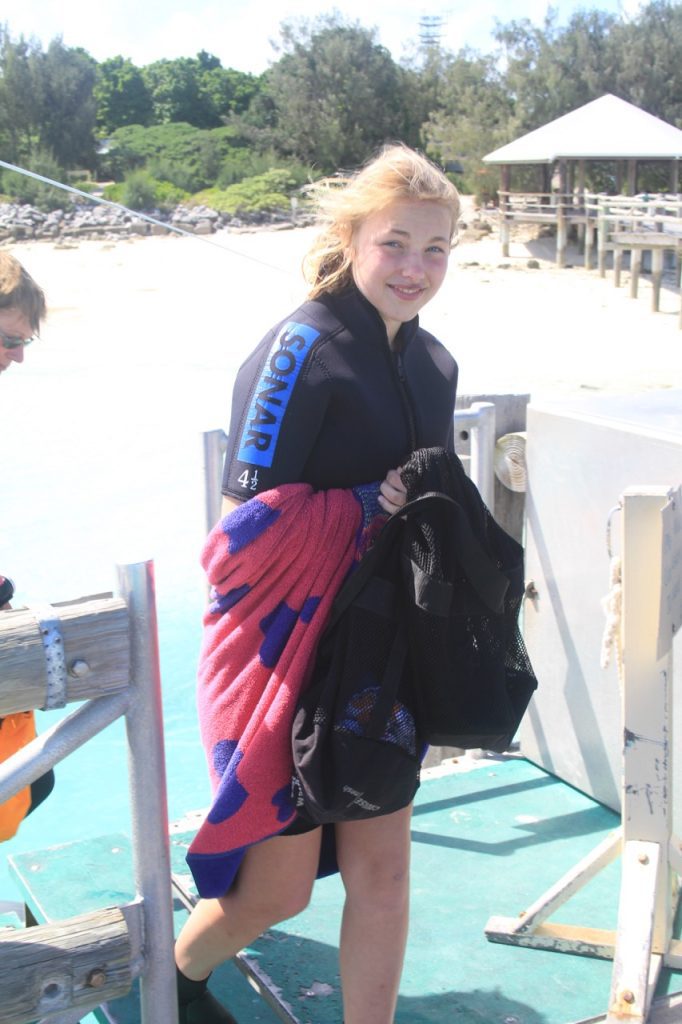



Each sunrise and sunset, just off the jetty, you can spy shovel-nosed rays, cowtail rays and pink whiprays partially buried in the sandy shallows, as well as blacktip and whitetip reef sharks cruising the shore. In fact, you need to watch where you step or snorkel, lest you disturb a resting ray! You can actually see the shark’s fin who is next to us snorkelling!!











Go to: Australia







We missed Trent on his 21st which was the day that Osama Bin Laden was killed – very crass American jubilation – he was an awful man but he was still a Father, Husband, Brother … we enjoyed the facilities…











We walked the circumference of the island every evening … simply divine.














What a privilege to have spent time in this piece of natural unspoilt paradise! We left with a sad sinking of the heart – we will be back…














Go to: Australia

